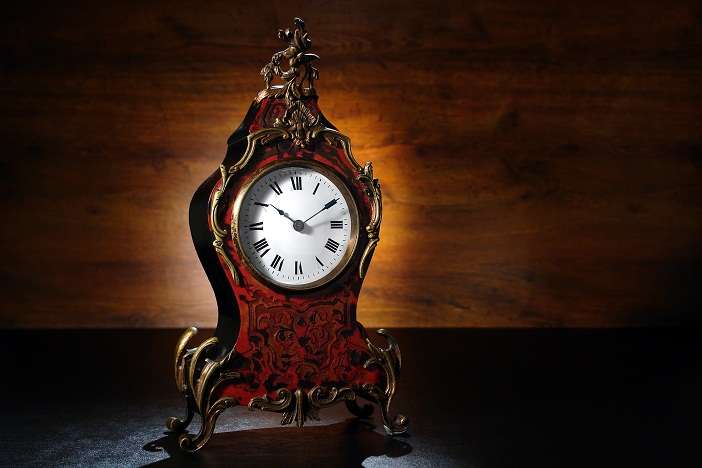Want to learn more about the French clock movement? Read our guide for facts and info on this timepiece mechanism…
The French Clock Movement is a popular piece of timepiece mechanics found in a majority of clocks in Europe including France and Italy. The pendulum clocks manufactured in the 1700s and 1800s are synonymous with this kind of movement and have quite a few hidden characteristics which make them unique. The round shape and variations make it fairly distinct and identifies it. The French clock movement has a five spoke wheel which is called the locking plate, and is found in approximately 90% of these clocks.
French Clock Movement Usage
The hand of the clock can be wound clockwise only and every half hour the strike work will complete the whole number of blows. This kind of French clock movement needs major maintenance an overhaul every four years. Do not wait for the clock to stop working for you to have it maintained. If you do that then the cost of repairs will be very high because the pivots and pinions will wear out and the lifespan of the clock will be reduced. If you need to transport the clock make sure you detach the pendulum from the movement by unscrewing the nut and unhooking the pendulum. In order to clean the clocks simply remove the dust with the soft cloth and do not use abrasive cleaning products.
French Clock Movement Winding Lasts 8 Days
Traditionally the French clock movement or the Pendule de Paris can last for eight days on a single winding, like the majority of quality pendulum clocks. The mainsprings on these clocks are 80-200 years old and have lost the power so the clock motion gets exhausted faster. The performance of this clock is better when it is completely loaded. Of course if you replace the mainsprings, then you can use the clock for a fortnightly winding. However, the construction of mainsprings today is not high-quality like the 18th century product. Basically the barrel diameter and height of the new spring is thicker than it used to be. This means that a thick mainspring requires more room in the clock and if it breaks it could cause serious damage. However, a collector of antique clocks does not really care how many days the clock runs and prefers to wind it weekly.
The French Movement Clock Striking Error
The French movement clock has a striking error sometimes when the hands of the clock do not mark the hour corresponding to the number of the strikes sounded off by the clock. This often happens if you do not wait for all the blows struck when passing on halves and hours both. It can also happen if the unwound clock stops. You can correct this problem by bringing the minute hand closer to a half of your choice but do not pass it over the half. Now take it back slowly till the clock strikes. If you continually repeat this action, the half and hours will play succeeding strikes, and in limited to and fro movement will always remain in the same position. But you can terminate the action when the clock strikes the exact number corresponding to the last hour passed by the hands.





